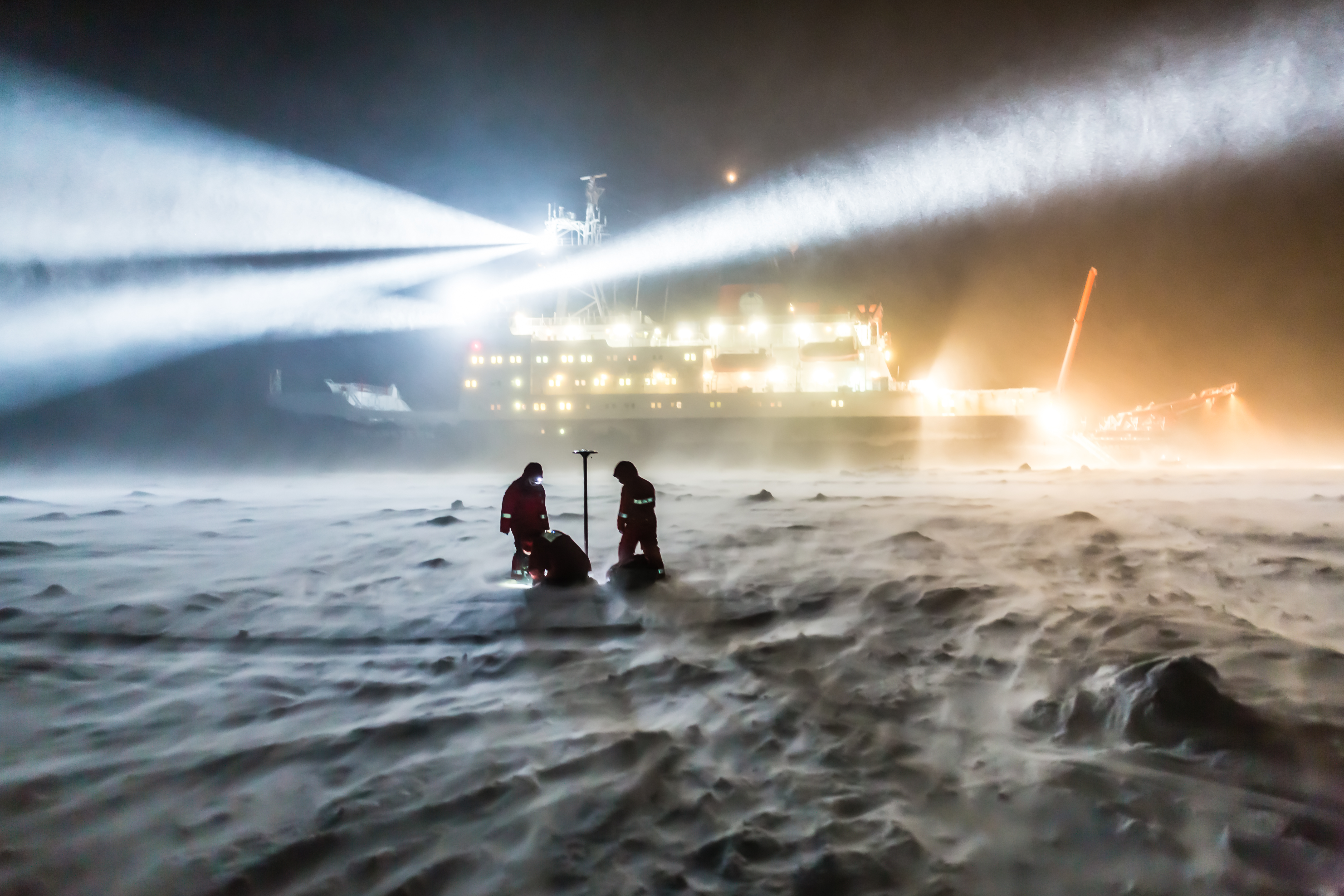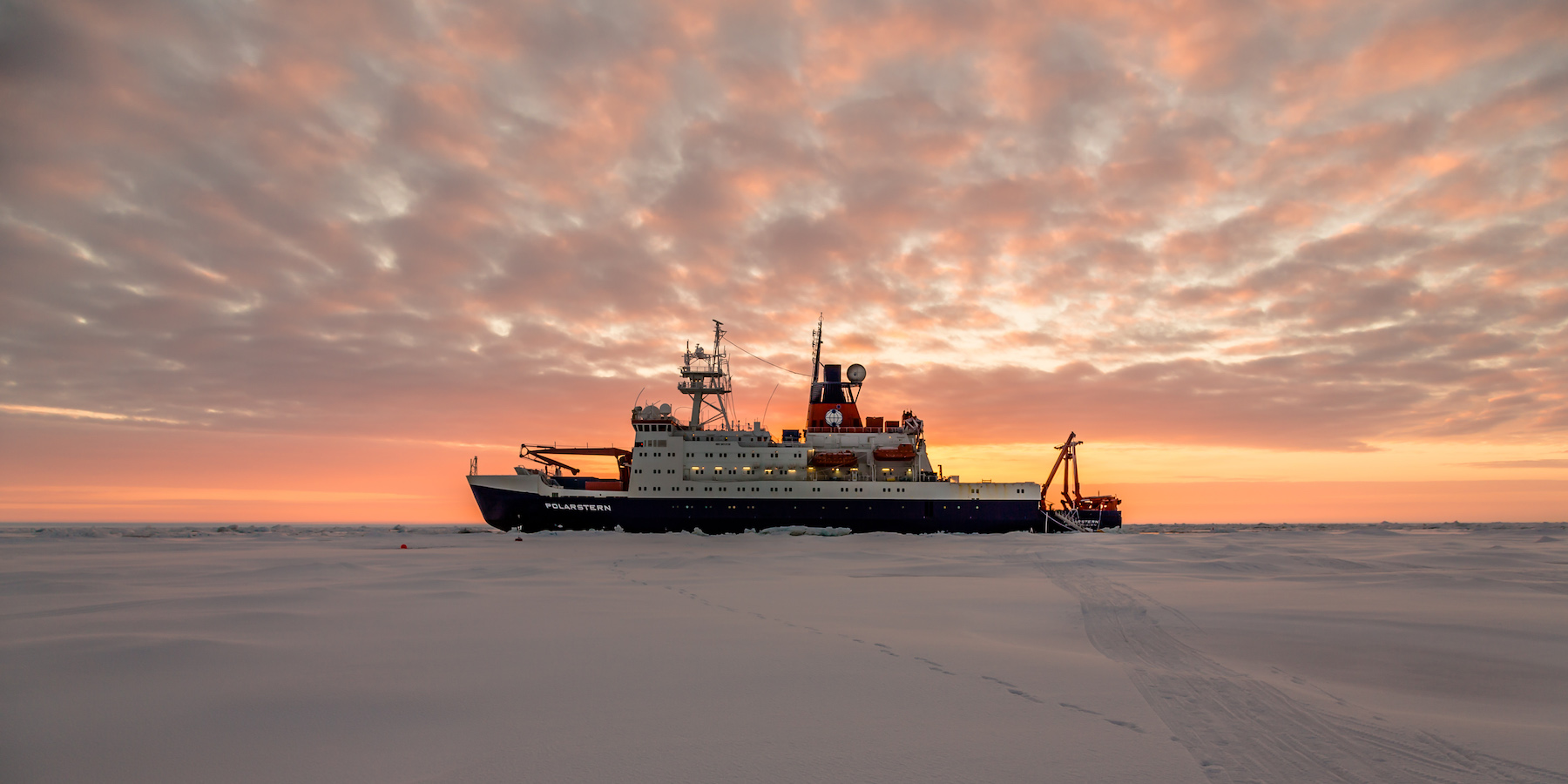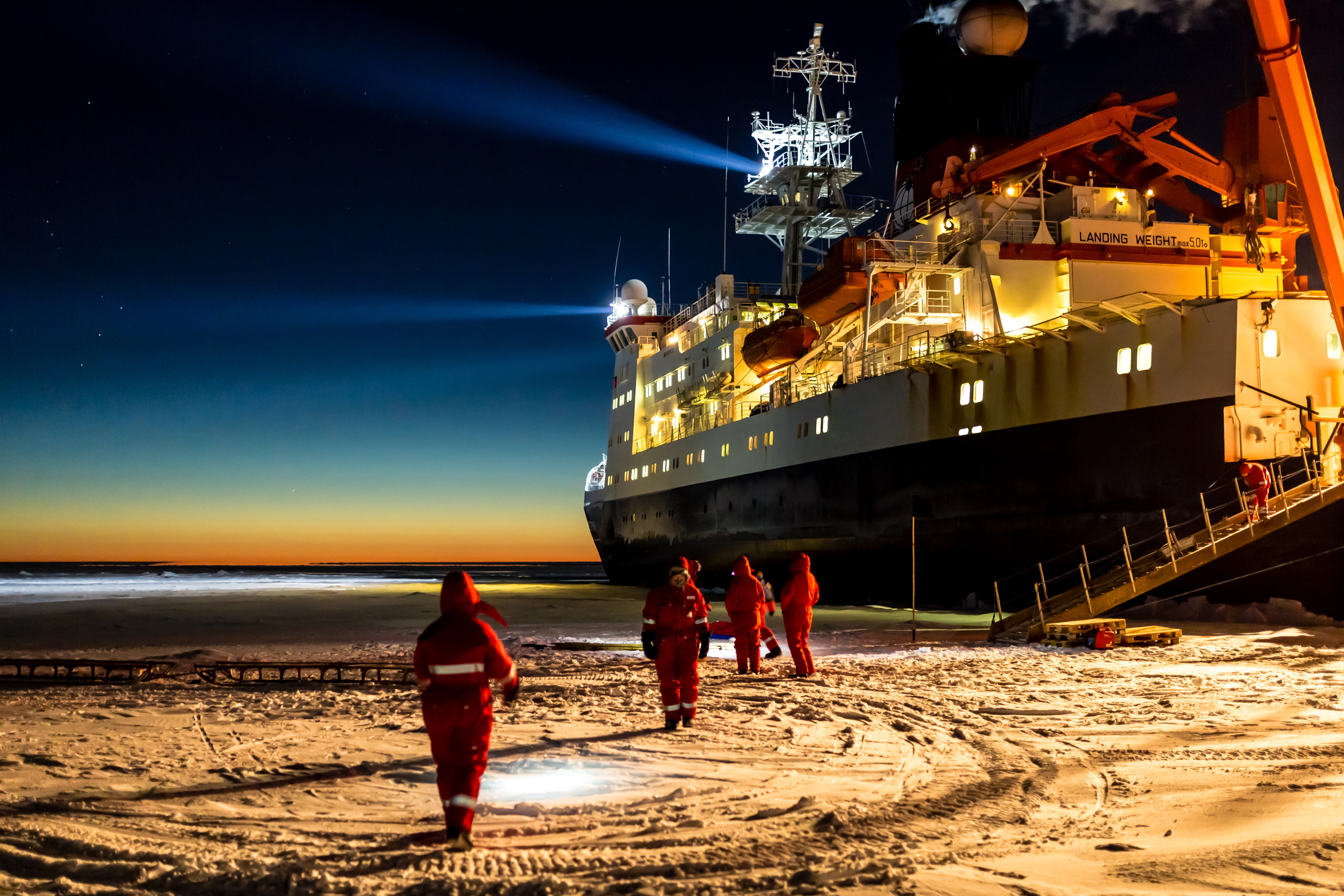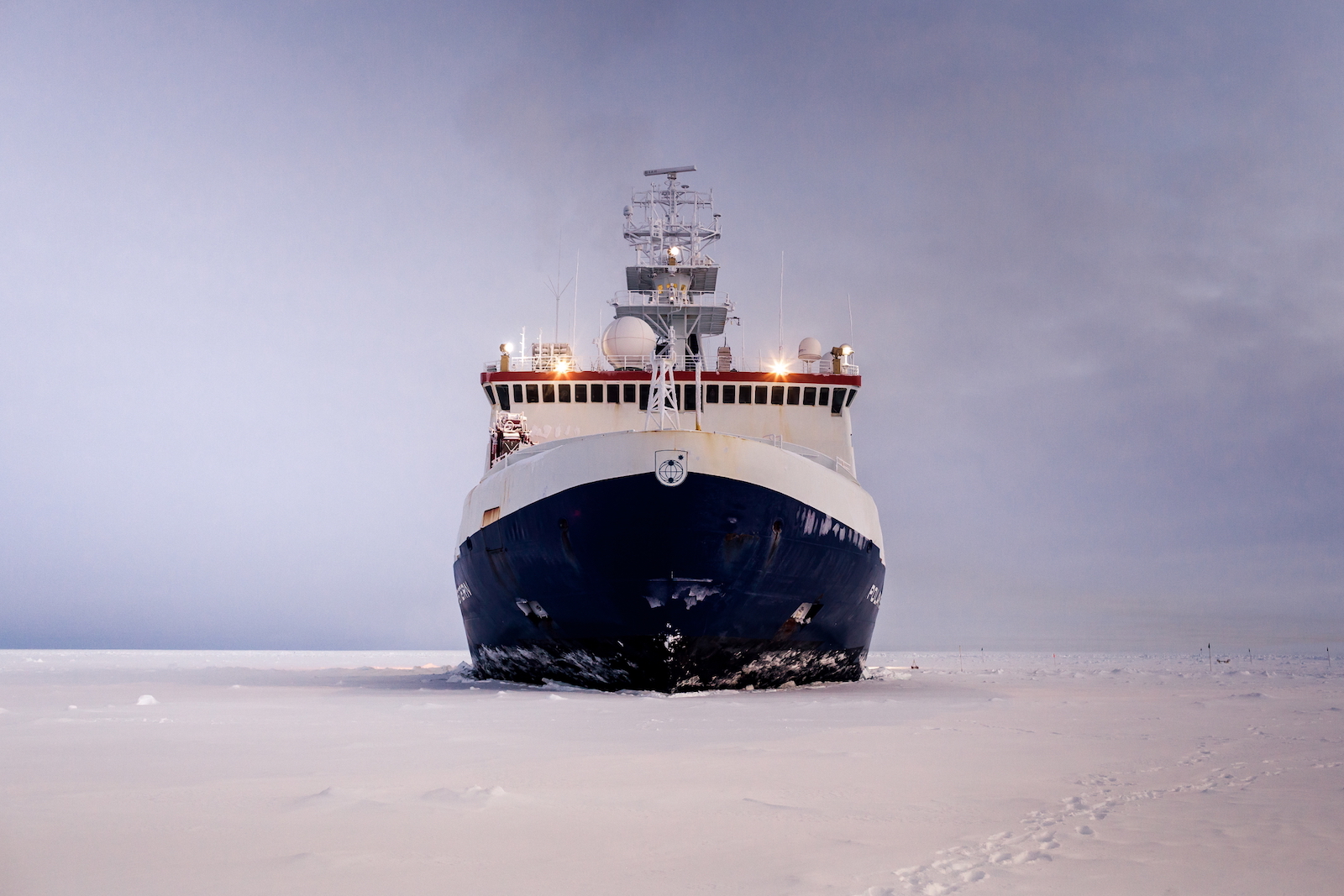A Massive Icebreaker Ship Will Trap Itself in Arctic Sea Ice on Purpose. Here's Why.
It's studying the interactions between the Arctic and the global climate.




One of the world's most indestructible ships will depart Norway in a few weeks, bound for the Arctic Ocean, where it will spend the winter deliberately trapped in sea ice, drifting wherever the winds take it.
The powerful icebreaker, called the RV Polarstern, has an ambitious goal: to determine how climate change is reshaping the Arctic. The 13-month-long, $130 million expedition, called Multidisciplinary drifting Observatory for the Study of Arctic Climate (MOSAIC), has been planned for years and will require more than 600 scientists and technical staff.
The ship sets sail Sept. 20 from Tromsø, in northern Norway, and it will head eastward along the coast of Russia. Expedition leader Markus Rex, of the Alfred-Wegener Institute (which operates the Polarstern), said the ship will likely enter floating sea ice in mid-October, and then will drift across the Arctic, surrounded by ice, until next summer, before returning to its home port in Bremerhaven, Germany, in the fall.
Getting stuck in floating sea ice would spell the end for most ships, but Rex said the Polarstern is tough enough to handle it.
Related: Images of Melt: Earth’s Vanishing Ice
"Our ship is one of the most powerful and most capable research icebreakers that exist," Rex told Live Science."There could be huge pressure from the ice … but we know the strength of our vessel. We are not in danger of losing our ship."
Icebound in the Arctic
Climate change is altering the Arctic. Each September, the Arctic sea ice minimum covers around half the area it did 30 years ago, and scientists fear their knowledge is outdated.
Sign up for the Live Science daily newsletter now
Get the world’s most fascinating discoveries delivered straight to your inbox.
Some of the trends driving changes in the Arctic can be spied from afar using satellite imagery, but many of the local processes involved are still not clearly understood. From its icebound, ever-changing location, the MOSAIC expedition will give scientists a much clearer understanding of these processes. The expedition will investigate the environmental energy sources involved in melting and moving sea ice, the formation and precipitation of Arctic clouds, and the effects of heat and mass transfers between the atmosphere, the ice, and the ocean. Then, the findings will be used to refine computer models of the global climate, Rex told Live Science.
At different phases of the expedition, hundreds of people will be transported to the icebound Polarstern by four other icebreakers — from Sweden, Russia and China — and by aircraft that will land on an ice runway built nearby.
Unlike on previous scientific expeditions, the scientists will study the Arctic environment throughout its annual cycle of freezing and thawing, from the growth of sea ice in the fall through to its breakup the following summer.
Where the sea ice is thick enough — around 5 feet (1.5 meters) thick — remote camps and scientific instruments will be placed up to 30 miles (50 km) from the Polarstern. Measurements will be made at depths down to 13,000 feet (4,000 meters) below the surface and at altitudes of more than 114,000 feet (35,000 m).
To the pole
The scientific expedition on the Polarstern hearkens back to the voyage of Fridtjof Nansen's ship, the Fram, at the end of the 19th century.
Nansen had the Fram specially designed and built to withstand the pressure of the surrounding sea ice. He and his crew of 12 left Tromsø in July 1893 and started drifting with sea ice in October, near the New Siberian Islands in the far north of Russia.
But after drifting with the ice for almost two years, Nansen was unsatisfied with the ship's progress — and he and crewman Hjalmar Johansen left the ship in March 1895 in an attempt to reach the North Pole over the ice.
We know the strength of our vessel. We are not in danger of losing our ship.
Markus Rex
Severe frostbite and worsening weather forced them to turn back within a month, and they retreated to the Arctic islands of Franz Josef Land for the polar winter.
Nansen and Johansen were eventually rescued by another Arctic expedition; the Fram stayed icebound until August 1896 before returning with the rest of the crew to Norway.
The upcoming expedition of the Polarstern was first proposed about eight years ago by scientists at the Alfred Wegener Institute, as a modern effort to improve upon Nansen's Arctic journey, Rex said.
The uncertainties of the drifting sea ice mean that, like the Fram, the Polarstern might not reach the North Pole, but planners are confident the ship will reach the Atlantic sector of the Arctic next year, Rex said.
"The wind pushes the ice, and our vessel will follow whatever the ice does," he said. "We know what the wind systems do in the central Arctic, and they will push us in the right direction."
Originally published on Live Science.
- On Ice: Stunning Images of Canadian Arctic | Live Science
- In Photos: A Conveyor Belt for Arctic Sea Ice | Live Science
- 8 Ways Global Warming Is Already Changing the World | Live Science
Editor's Note: This article was updated to correct the thickness of the sea ice.
Originally published on Live Science.
Tom Metcalfe is a freelance journalist and regular Live Science contributor who is based in London in the United Kingdom. Tom writes mainly about science, space, archaeology, the Earth and the oceans. He has also written for the BBC, NBC News, National Geographic, Scientific American, Air & Space, and many others.









